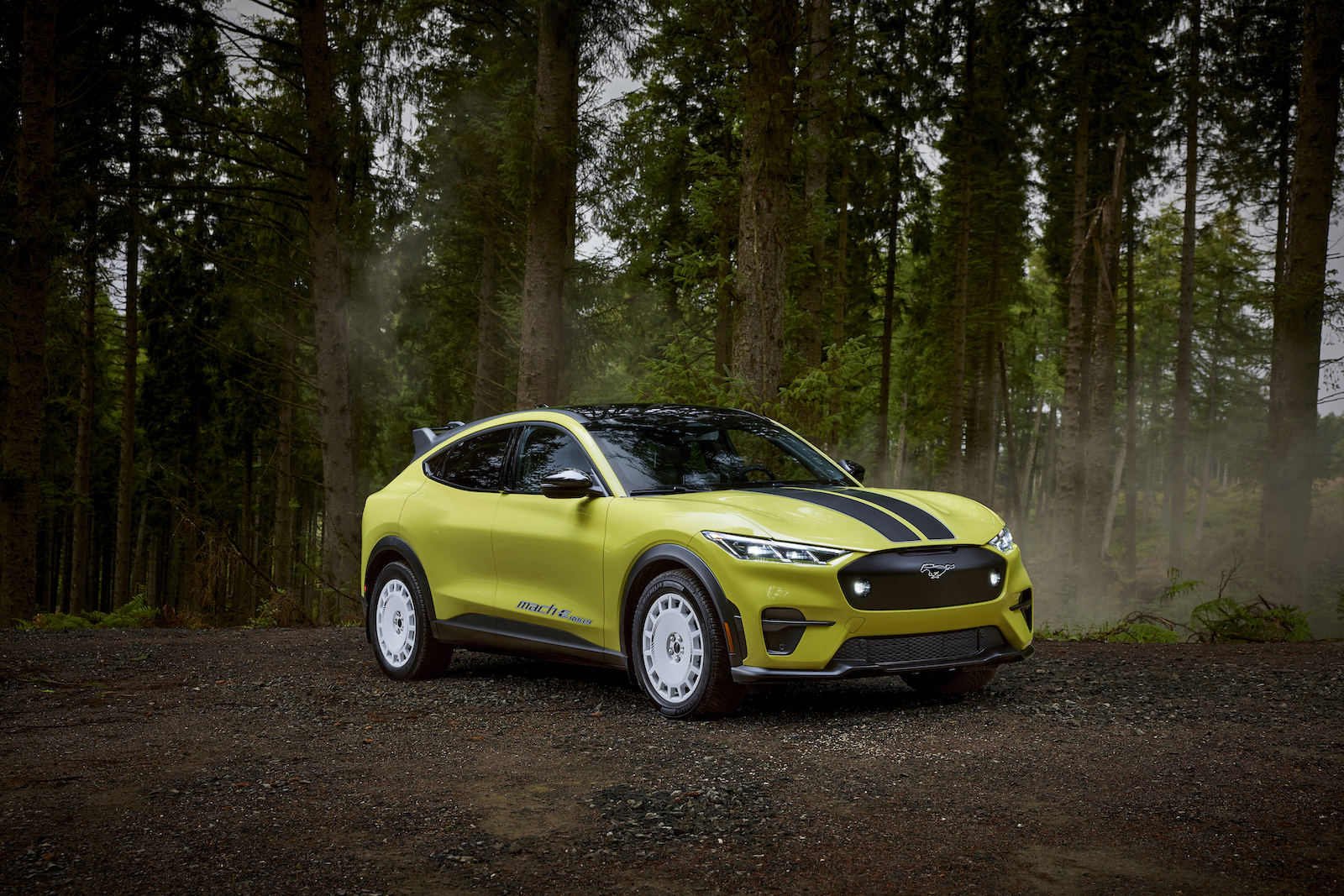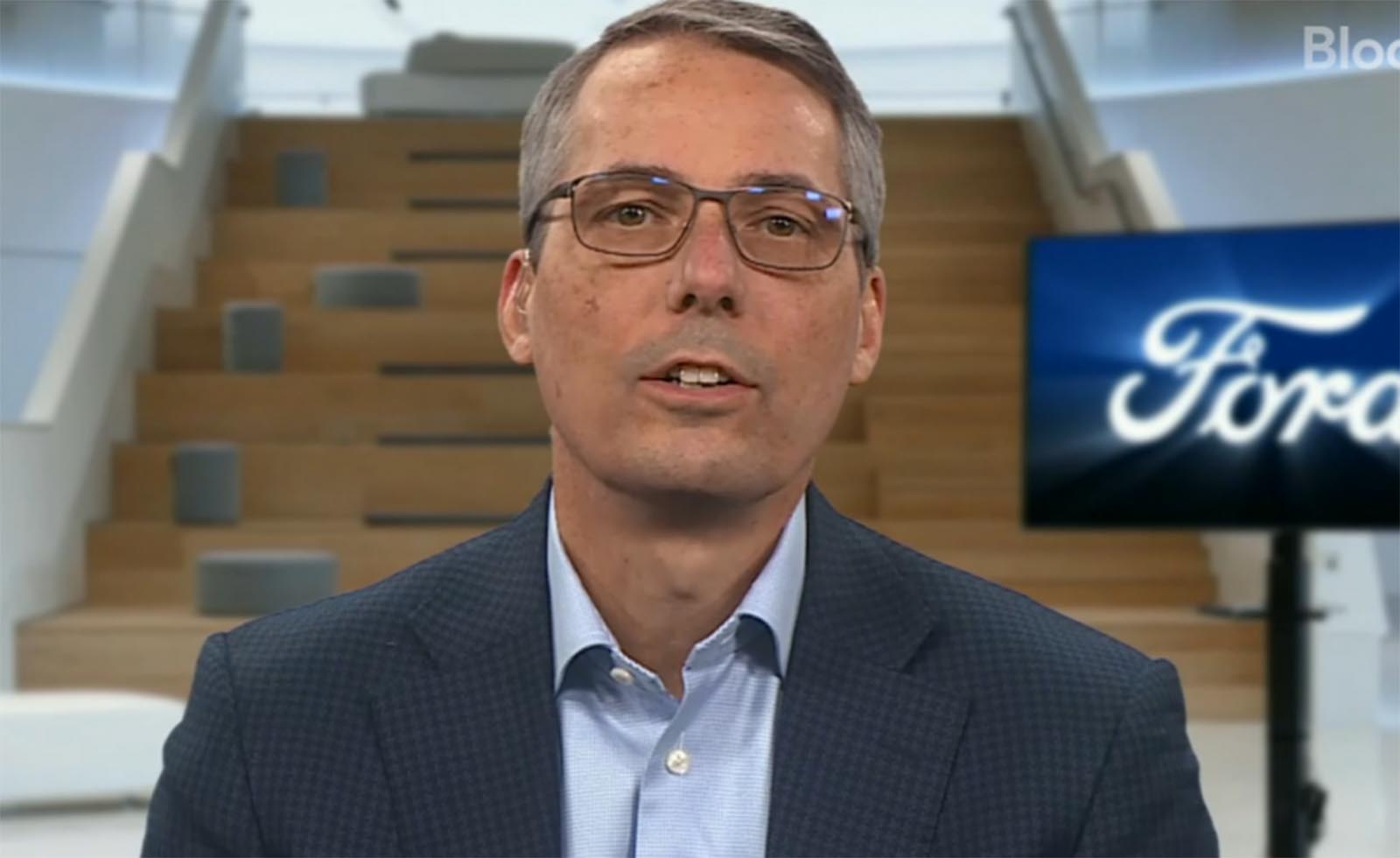Ford is rethinking its commitment to battery-electric vehicles, at least in the near term, company officials revealed during an earnings call. It might seem a logical move considering the automaker lost about $37,000 on every EV it sold during the third quarter. But Ford is by no means the only automaker rethinking its commitment as growth in the electric vehicle market slows.

Pulling a heavy load: Ford lost about $37,000 on every EV — like this F-150 Lightning — it sold during the third quarter.
Ford has long realized that it will lose a sizable chunk of money getting into the EV market, the automaker estimating its electric vehicle and software operations would go $3.1 billion into the red this year. But the losses have so far been worse than expected, coming to $3 billion through just the end of the third quarter.
Measured another way, Ford lost an average of roughly $37,000 on every Mustang Mach-E and F-150 Lightning it sold during the July-September quarter. That’s enough to convince the automaker to push back its aggressive EV investment program which was to have seen it spend $12 billion on new plants and products.
EV production costs have accelerated this year — with the new UAW contract expected to mean even higher costs for Ford, General Motors and Stellantis. At the same time, consumers are proving more reluctant to pay the typical $10,000 premium for an electric vehicle when compared to a similar gas-powered model. While EV sales are still growing, the pace has markedly slowed down since the beginning of the year, according to industry data.
Being “judicious”
“Given the dynamic EV environment, we are being judicious about our production and adjusting future capacity to better match market demand,” Ford CFO John Lawler said during a Thursday evening earnings call. “All told, we have pushed about $12 billion of EV spend, which includes capex, direct investment and expense.”
Among other things, that will result in a hold on construction of a second battery plant in Kentucky, a facility that was to have supported the 5-square-mile BlueOval City EV manufacturing complex Ford is building near Memphis. The automaker also said it is still evaluating whether to go ahead with plans announced last February for another battery plant in rural Marshall, Michigan.
Ford is by no means the only automaker rethinking its battery-electric strategy. Last week, General Motors said it would delay by more than a year the reopening of its EV plant in the Detroit suburb of Orion Township, saying it was “reevaluating” the EV market.
A “bumpy” road “which is not unexpected”
“As we get further into the transformation to EVs, it’s a bit bumpy, which is not unexpected,” Chairman and CEO Marry Barra told analysts and reporters during GM’s earnings call on Monday. “What we’re moving to is something that we can react in a much more agile way to make sure that we have the right vehicles.”
The automaker had already abandoned plans a goal of selling 400,000 battery-electric vehicles during a two-year period ending mid-2024 – though its slowdown in sales has reflected supply and production issues as much as any slowdown in consumer demand for EVs.
Share gains slow, but sales continue to rise
Indeed, much of the coverage of the EV market has been overstating what’s happening, at least from a consumer perspective. As recently as 2019, battery-powered vehicles accounted for less than 1% of the U.S. retail market, rising to more than 5% in 2022 and more than 8% at the start of this year, noted Tyson Jominy, vice president of Analytics and Data for J.D. Power. That share has leveled off in recent months.
But raw sales continue to rise, Jominy noted, as the overall U.S. new vehicle market recovers from a slump caused by COVID and semiconductor shortages. Overall sales of EVs are expected to top 1 million this year for the first time ever.

Tesla has cut prices repeatedly this year and analysts expect another reduction after a weak third quarter.
Prices cut, margins tumble
But manufacturers are having to work harder for each sale. Tesla kicked off a price war early this year, slashing the MSRP on key products including the Models 3 and Y. And analysts have forecast another round of cuts will likely follow the Texas-based automaker’s sales and earnings shortfall during the third quarter.
Competitors have had to follow suit. Ford trimmed the price of the Lightning pickup by as much as $10,000 over the summer, depending upon the model. Volkswagen, meanwhile, is offering as much as a $7,500 cash incentive on leases of the ID.4 electric crossover through the end of October.
New UAW contracts add to labor costs

Labor costs will rise sharply after the UAW settles with Detroit’s Big Three, putting further strain on EV pricing.
During Thursday’s earnings call, Ford CEO Jim Farley focused on consumer resistance to paying a premium for EVs, but he also noted that production costs have been rising. That helped contribute to the $1.3 billion in losses racked up by the Model e division that oversees its EV operations.
Farley and CFO Lawler stressed their goal of streamlining productions costs as the company brings second and third-generation EVs to market. But that target will be complicated by the tentative settlement it has reached with the United Auto Workers union which will raise wages alone by 25% during the next 4.5 years.
While they’re still negotiating terms with the UAW, GM and Stellantis are expected to follow the pattern set by the new Ford contract.
A “brutal” market
That could give non-union manufacturers a critical cost advantage, especially Tesla, which is widely believed to already pay the workers at its two U.S. assembly plants about $20 an hour less than Detroit’s Big Three. Nonetheless, EVs are proving to be a headache for just about everyone — including Tesla. CEO Elon Musk expressed open concerns during his own third-quarter earnings call, going so far as to say the company has “dug our own grave” with the Cybertruck pickup.
During an earnings call this week, Mercedes-Benz officials blamed a “brutal” EV market for its lower-than-expected return-on-sales forecast.
“This is a pretty brutal space,” said Harald Wilhelm, the German automaker’s chief financial officer. “I can hardly imagine the current status quo is fully sustainable for everybody.”
Volvo remains optimistic

A Volvo EM90 concept vehicle. The automaker has actually seen margins rise for its EVs — and remains optimistic about the future.
Not all automakers are so worried about the EV market. Volvo remains among the most optimistic. With its new, all-electric EX30 set to roll out this year, and the new EX90 flagship soon to follow, it is on a path to a pure EV lineup. And it may be paying off. Volvo’s margins on EVs rose to 9% during the latest quarter, up from 3% during the prior three-month period.
“I expect to see us increase our BEV margins as we go into the fourth quarter, and that is because prices of raw material are coming down,” CEO Jim Rowan told Reuters after earnings were announced.
Even so, it appears analysts and investors remain skeptical, the automaker’s shares tumbling as much as 12% on Thursday, rebounding only slightly as the week draws to a close.
The EV market is “just catching its breath”
The current skepticism about EVs doesn’t surprise everyone. After being billed as a panacea for climate change and other issues, a more realistic view is taking shape, according to Sam Fiorani, lead analyst with AutoForecast Solutions. But he’s optimist, at least in the long-term.
“Growth may be leveling off” for the moment, Fiorani said, “but it’s just catching its breath.”
The question is whether the pace of growth will allow manufacturers to recover their hefty investments, cautioned Power analyst Jominy.
Slicing up the pie
(Japanese automakers reveal an array of concept and production EVs at 2023 Japan Mobility Show.)
“The big issue is that we went from 16 EVs in 2019 to 48 in 2023,” Jominy told Nikkei, “and we will add another 30 next year.”
As a result, the industry is likely to continue running up losses in the EV market for some time, Jominy and other analysts forecast.





0 Comments